Solved problem 7-2 for k value for frame 2/3.
Side-sway Uninhibited frame calculation for the solved problem 7-2.
K value for frame-K value for column CD.
The Ix/L values for both columns and beams are given by the author and placed between brackets. For the sake of checking, two elements are selected for a random check. The first column DC has a section of W12x40 and a height of 15′. the second element is beam DH which has a section W18x50 and a length of 30′.
For column Dc with W12x40,Ix value=307.0 inch4,vL=15′, the Ix/h=307/15=20.466 inch4/ ft.
For the beam of W18x50, Ix=800 inch4, l=30, then Ix/l for the beam=800/30=26.666=26.67 inch4/ft.
First, for the G at Joint D, there is only one column at joint D, so G= sum of (EI/L) for one column/ sum(EI/L )for one girder, G=20.47/26.67 =0.7675, at joint C
There are two columns and one girder, G= sum (20.47+23.20)/(70) =0.6238.
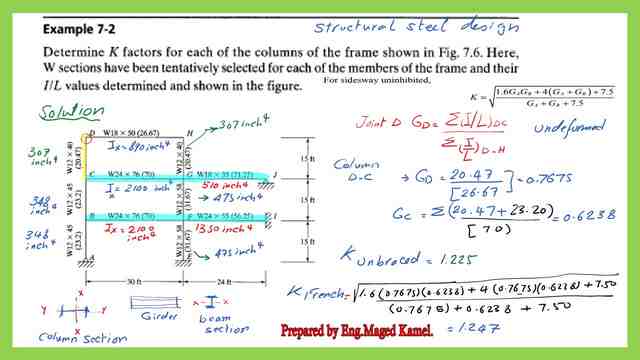

Using the French equation k=sqrt((1.6*GA*Gb+4*(GA+Gb)+7.5))/ sqrt(Ga+Gb+7.5), for the unbraced frame, substitute the values of GA as 0.7675 and Gb=0.6238) in both the numerator and denominator. We get k=1.247, this value is close to k=1.225, and the error value is small.
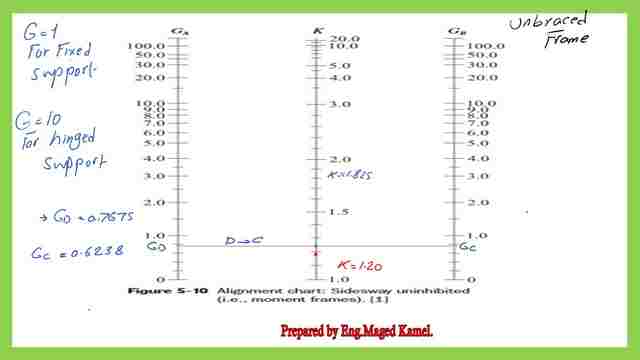

Side-sway inhibited frame calculation for the solved problem 7-2.
K value for frame-K value for column BC.
We check the other column BC, Gc=0.6238 for joint B, two columns and one girder Gb=sum(23.2+23.2)/70=0.6628, the web plane is in the frame direction if we have a look at the elevation of the section.
The two flanges are at the left and right, this section will intersect with the girder section two webs, for the column and girder will intersect in the frame elevation. I have written the values of Ix for the different sections.
If we divide The inertia value over the length or -Ix/L for the girder, we get the same figures between brackets. After estimating Gb, and Gc, knowing that the frame is a braced frame at that level since the joints C, and B not moving. The next slide shows the calculation for Gc and Gb.
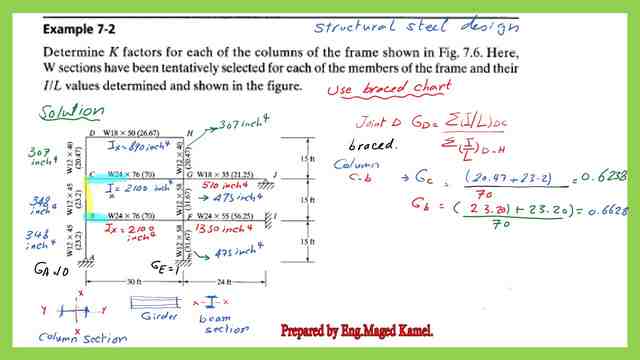

Here is the graph, the values of both Gc and Gb can be found as – Gc=0.6238, Gb=0.6628, and the k value will be obtained from the Nomograph for a braced frame from marking the different values of Gc and Gb on the graph.
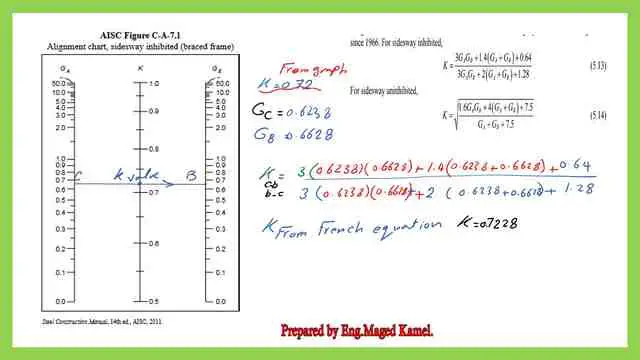

K value for frame-K value for column BA.
Now we will consider column BA, for which Relative to each other, there is no Sway, GA=10 since the support is hinged.
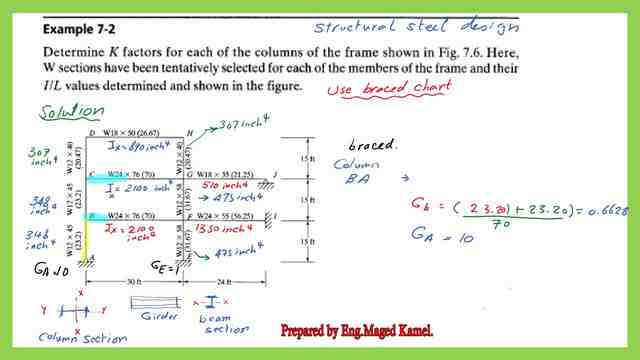

For column Gb as estimated earlier Gb=(23.2+23.2)/70=0.6628, GA=10. Now we will consider column BA, for which Relative to each other, there is no Sway, GA=10 since the support is hinged. We will estimate the k value by both methods, the nomograph and the French equation in the next slide.


We use the Nomograph for the braced frame, here is G=0.6628, Gb=10, the line joining represents column BA, will intersect with the middle line then k=0.83.
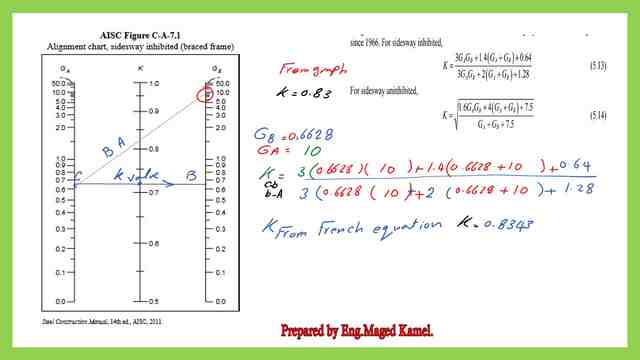

Using the French equation, for the braced frame, substitute with 0.6628 and 10, and we get k=0.8343. We will check column HG. and we will continue the next time in part 3 of the solved problem 5-2.
This is the pdf file used in the illustration of this post and the previous post.
A very useful external link is Chapter 7 – Concentrically Loaded Compression, Members.
This is the next post, Solved Problem 7-2 For K Factor part 3.

